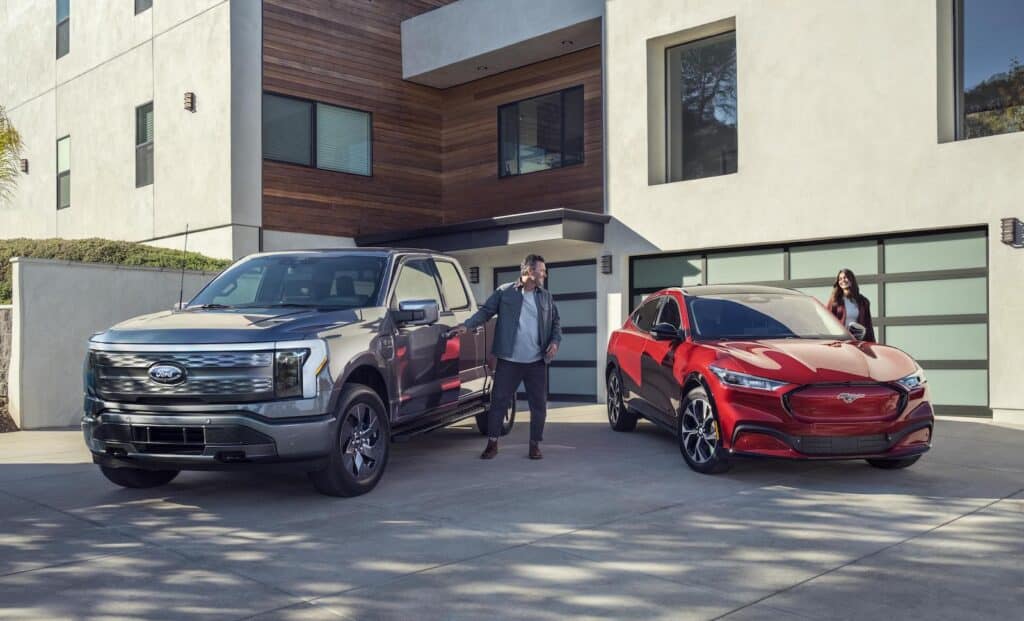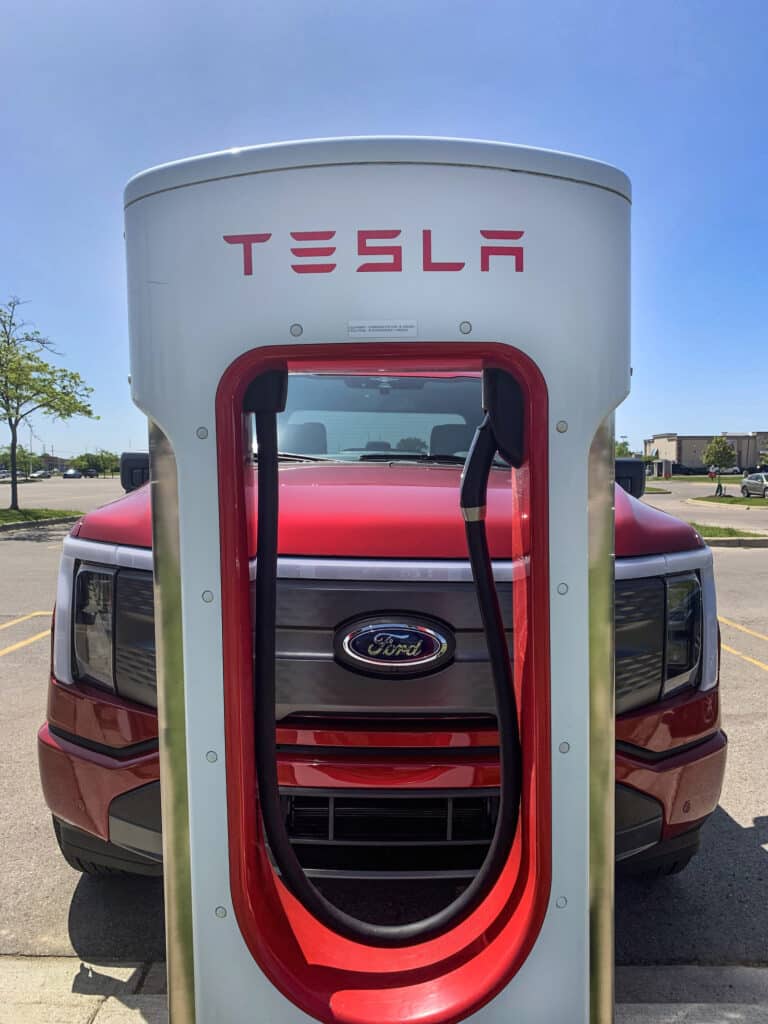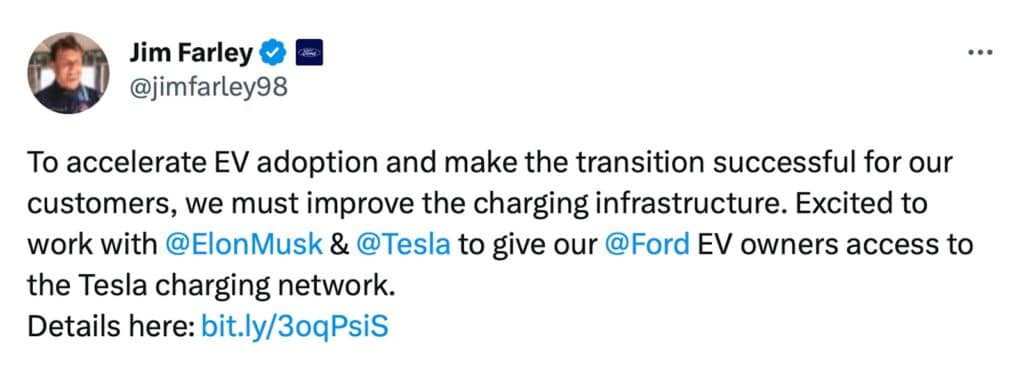Ford Teaming with Tesla to Make Charging Even Easier
Motorists who own Ford EVs, including the Mustang Mach-E and SUV and F-150 Lightning pickup, will next year gain access to 12,000 Tesla Superchargers in North America.

The new alliance between the two automakers will help Ford address what is has become a critical obstacle to more widespread acceptance of battery-electric vehicles: the need for a more robust public charging network. The agreement will more than double the number of places Ford owners can plug in when they’re aware from home.
Ford owners will have the option to purchase an adaptor allowing them to connect to the unique plug used by Tesla. Starting in 2025, however, the Detroit automakers will switch from the port its vehicles currently are fitted with, migrating to the one now built into Tesla vehicles.
“An equal footing”
Describing the partnership as “super exciting,” Tesla CEO Elon Musk said, “Ford (EVs will) be at an equal footing at Tesla Superchargers,” during a joint announcement on Twitter Spaces with Ford Chief Executive Officer Jim Farley.
Musk has already announced his intention to open up the Tesla network to competing manufacturers, and on Thursday evening he said, “We don’t want Superchargers to be a walled garden.” But the deal with Ford marks the first direct alliance with an erstwhile rival that Tesla has negotiated.
The two executives indicated Ford owners will be able to charge up just as quickly as Tesla owners using the Superchargers – at least up to the speed the electronics and battery system onboard Ford vehicles will permit.

Ford set to adopt Tesla’s unique charger plug
To make use of the Superchargers, however, those who currently own Ford products will need to acquire an adaptor that can accept Tesla’s unique North American Charging Standards, or NACS, plug. Ford products are outfitted to accept the more commonly used Combined Charging System, or CCS, plug shared with manufacturers including General Motors, Volkswagen, Volvo and Toyota, among others.
“We’re aiming for that adaptor to be in product by early next year,” said Musk, with Farley adding it “will not be cost-prohibitive.”
Another major step will take place in 2025, when Ford migrates from the CCS system to start outfitting its vehicles sold in North America with Tesla’s plug technology. By then, Ford is expected to add several more all-electric models to its product portfolio, including vehicles sold by both the Ford and Lincoln brands.
EV demand outstrips supply
Ford has gained significant traction in the EV market with its two current retail offerings, demand significantly outstripping its production capacity. It plans to substantially boost production of both the Mach-E and Lightning this year. When it launched the pickup truck in spring 2022, it had capacity to build about 25,000 annually. That will jump to a run rate of 150,000 this year at its plant in Dearborn, Michigan.
The second-largest Detroit automaker has already formed an alliance with a number of competing charger networks, including Electrify America. All told, they provide about 10,000 charging stations Ford owners already can use. With another 12,000 Supercharger stations set to be available next year it will make it significantly easier for Ford EV owners to stay powered up, even when traveling long distances.
Charger deserts
Tesla has focused on placing its Superchargers along key routes across the U.S. and Canada, making it easier for its owners to travel to destinations in parts of the country, such as the Dakotas, that have traditionally been defined as “charger deserts.”

A recent study released by J.D. Power last month showed growing interest in battery-electric vehicles. But it also underscored how the lack of a robust national charging infrastructure is holding many buyers back from actually purchasing an EV. According to some experts, “charger anxiety” has become as much a factor as range anxiety and the premium manufacturers charge for their all-electric models.
Feds set to fund charging infrastructure
Some observers have questioned Musk’s willingness to open up the Supercharger network, as it has been one of the key selling points for the now Texas-based automaker. Ford is one of several manufacturers who have positioned themselves as a direct rival. But the move also provides a potentially significant new source of revenue for Tesla.
Longer term, EV advocates are confident that the EV charging infrastructure will support the growth in battery-car sales proposed by the Biden administration. It wants to have zero-emission models account for about half of total U.S. new vehicle sales by 2030. Congress approved $7.5 billion in funds to help build out the necessary charging network, with a target of having 500,000 charging stations in place by decade’s end.
Auto Lovers Land
Comments
Post a Comment